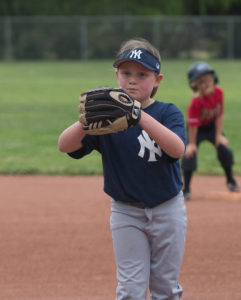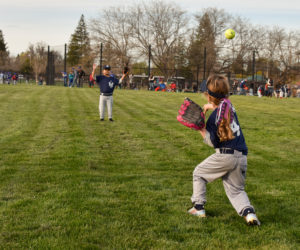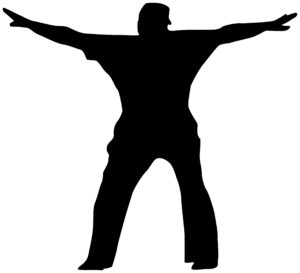Rules of the game
KNOW THE RULES
Knowing the rules is one thing. Applying them in the game in the moment is a different thing. Maintaining composure when someone is arguing the call...well, let's just say it is tough.
Over the years, there are some very common rules & game situations that cause angst between coaches & umpires. Here are a few to to understand well, whether you are a coach, umpire or fan.
1. Running lane violation
When the batter runner is advancing to first base he/she is required to run in foul territory. In the event the runner physically or visually interferes with the throw, catch, or the defense, over or in fair territory, the runner will be guilty of interference and called out. In that event, all other runners must return to the last base held.
2. Passing first base
Liability to be put out – A batter runner that runs past first base may turn in either direction to return to first base without liability to be put out. They give up that right if they make an attempt to advance to second base and are tagged with the ball prior to touching first base again. This is the sole judgment of the umpire.
3. Look Back rule
This rule only applies to softball. When the pitcher controls the ball in the circle all runners off base must choose to advance or retreat “immediately”. After a walk the rule is not in effect for until the batter runner reaches first base. After rounding a base, all runners are allowed one “stop” before choosing to advance or retreat. Stopping a second time after choosing a direction is a violation unless the pitcher fakes or makes a throw which releases all runners. After a fake throw all runners must once again immediately choose a direction.
4. Baserunner interference
Base runners must avoid fielders attempting to field a batted ball even if it was touched by the pitcher. The right of the fielder to a batted ball supercedes a baserunner’s right to the base path. “Interference is the act of an offensive player that impedes, hinders or confuses a defensive player attempting to execute a play”. The interference can be anything from a distraction by running too near the fielder to actual contact. It is strictly the judgment of the umpire as to whether a violation occurred. There does not have to be contact to constitute interference. Running in front of the fielder MAY BE a distraction, and CAN BE an interference violation. When interference is called the runner is out and all other runners must return to the last base held at the time of the pitch.
5. Batter's Interference with Cather's Throw
Batters inadvertently interfere with catchers attempted throws, most often to third base, when they back up and out of the batters box and into the catcher’s throwing lane. Intentional or not, the batter may be guilty of an interference violation and can be called out if the umpire judges batter interference has happened. A throw need not occur. All runners must return to the base they held at the time of the pitch. Batters should be taught to stand still, as they are entitled to their position in the batter’s box provided there is no play at home plate. If however the umpire feels that the batter interfered with the throw by the catcher, the batter is guilty of interference and will be called out. This often happens as a result of being off balance after a swing.
6. Batter's Interference with Play at the Plate
Interference with a play at the plate happens when there is a runner on 3rd base and there's a passed ball or wild pitch and the runner tries to score. You have the catcher scrambling for the ball, the pitcher running in to cover the plate, and you have the runner charging toward home. And then there is the batter! What is he/she to do in the split second moments?
It is a common misnomer that the batter is entitled to the batter’s box. This is only partially true when the catcher attempts a pick-off throw at 3rd base. Otherwise, the batter must vacate the area to avoid a collision and / or impeding the catcher or pitcher from making a play at home. This includes blocking the catcher from retrieving the ball. If the batter hinders the play whether intentionally or not, we have Batter’s Interference.
Now, who is out? With less than two outs, the Runner is out. With two out, the Batter is out. The rule is written this way to prevent the Batter from coming back up to bat in the next inning. In either scenario, no Run scores.
7. Obstruction
No fielder may block the base path without possession of the ball. Catchers are most often at fault by waiting for a throw in the runner’s path. Runners have the first right to the path they have chosen when the fielder does not yet possess the ball. Fielders must give base runners access to the plate or any base until such time as they have the ball in their hands and only then do they have a right to be in the runner’s chosen path.
Errant Throws - PHBA follows the BASEBALL Rules with respect to errant throws for both Baseball and Softball. An errant (off line) throws that bring the fielder into the path of the runner IS NOT an obstruction violation on the fielder even when they ultimately make the catch and tag the runner. However, In USA SOFTBALL, this MAY BE an obstruction violation on the fielder even when they ultimately make the catch and tag the runner. This is completely the umpire’s judgment. It is important to understand this distinction, especially when your player is playing in the softball tournaments during summer and fall where USA Softball rules are enforced.
Defensive obstruction – Typically at first base and home, but possible at all bases, the fielder without possession of the ball is in the way of a runner attempting to “round” the base or run through home plate. Not allowing the base runner to round to the inside corner of the bag when no play is being made at that base or run through home plate at full speed is an obstruction violation on the fielder. After a walk the first baseman, without possession of the ball, may stand near enough to the bag to be interfering with a possible continuation by the runner. Typically runners are forced to step past the bag, instead of touching the inside corner of first base, in order to attempt to go to second base. In the case of home plate the runner is forced to slow down or even to slide. The umpire should signal the obstruction by raising the left arm horizontal to the ground. When signaled by the umpire, the runner cannot be put out between the two bases where they were obstructed. They will be awarded the next base only if, in the umpire’s judgment, they would reasonably have made that base. Otherwise the runner must stay at the last base acquired. If the runner continues on and is then put out, and in the opinion of the umpire they would not have been put out had obstruction not occurred at first base, then they may be awarded second, third or home.
8. Slide or avoid
Probably the most misunderstood of all. PHBA, MLB and USA Softball have a rule to protect players from unnecessary collisions. Slide or avoid is such an option. The problem is in understanding when to apply it. Sliding is always an option -- never a requirement! The only time a player would need to avoid a fielder by sliding or giving themselves up, is when they are obviously going to be out because the fielder has the ball and is waiting for them. In such a case the player may choose to slide or otherwise avoid contact with the fielder. In a situation where the fielder is waiting for a throw and is standing in or is subsequently drawn into the runner’s path by a thrown ball and contact occurs with a runner, it is the fielder that is possibly at fault by entering the lane of a runner who is legally advancing. A fielder receiving a throw at the last second does not make the runner guilty of failing to slide or avoid. It is not the responsibility of any runner to anticipate wayward throws that may create a possible last second possession of the ball and a possible collision. Unless the fielder possesses the ball in adequate time for the runner to recognize that they will be out there is no requirement for the runner to slow or otherwise avoid continuing their legal advance. When contact occurs in this situation it is most likely incidental contact. Malicious contact is not allowed and every attempt to avoid hard contact is required of both players. In these so called “bang bang” plays runners do not always have adequate time to recognize the possession or adequate distance to react to a fielder that may have or soon have possession of the ball. If contact subsequently occurs, they should not necessarily be penalized. Incidental contact may occur without necessarily penalizing either player.
9. Ball thrown into dead ball area base awards
Bases awarded, when a throw goes into dead ball territory, are from the time of the release of the throw, not when the ball goes into dead ball territory. The umpire must judge what base the runner had reached at the time of the release. All awards are two bases regardless where the throw was from or who threw it. Batter runners going to first are awarded first and second. Example -with a runner on first base at the time of the pitch, a throw going into dead ball territory results in the base runner being awarded third base. With an ongoing play if a runner reached second prior to the release of a throw that wound up in dead ball territory, that runner would be awarded home.
In the case of a pick-off play in baseball, the following conditions can occur. The pitcher becomes a fielder when he/she steps off the pitching plate prior to making the pick-off attempt. If the throw goes out of play, the runner(s) is(are) award two bases as described above. If the pitcher legally attempts a pick-off with out stepping of the pitching plate first and the ball goes out of play, the runner(s) is(are) awarded 1 base.
10. Infield fly
Runners on at least first and second with less than two outs. An infield fly must be a routine pop up in the infield that will be caught with ordinary effort as opposed to a pop up that a fielder might catch with extra effort. Ordinary effort is judged by the umpire and modified for the level of play in each division where the infield fly rule is active. A ball rules to be caught with ordinary effort in Western division will not necessarily be call the same in the National division. It is not the responsibility of the umpire to judge the talent of the individual players on the field, but rather the age appropriate skill level.
11. Pitched ball winds up in dead ball
Any pitched ball that goes directly into dead ball (over the backstop) or off the catcher into dead ball area is a violation and all base runners are awarded one base from the time of the pitch.
The “Foul Tip”
The foul tip is one those baseball rules that confuses the casual enjoyer of America’s pastime and infuriates baseball purists. This article is designed to help you understand this simple yet often misunderstood rule. According to MLB.com, “A foul tip is a batted ball that goes sharply and directly to the catcher’s hand or glove and…
When Does 3=1? [Coach-Pitch]
The rule for the number of coach pitches allowed was changed in 2020. So how many pitches does a coach really get to throw during coach pitch? This one seems simple enough, and yet the math never seems to add up for most coaches and umpires. This has been the rule for softball for years,…
The “Look Back” Rule
The Look Back rule is specific to softball. The rule, in the words of USA Softball (teamusa.org), “was supposed to stop players from dancing around between bases while the ball was in the Pitcher’s possession and control in the Pitcher’s Circle.” The short, paraphrased version of this rule is this: When the Pitcher A) Has…
Coach Pitch Interference
The rule for coach pitch interference was changed for baseball in 2020 and is now consistent with softball rules. The coach should make every effort (think Neo in the Matrix) to avoid contact with a hit or thrown ball. However, if the coach is hit by the ball, the ball is LIVE and play will…
The OVERTHROW Rule is Dead!
The Overthrow Rules 4.11 for both Pioneer divisions have been rescinded and revamped to encourage the kids (and especially the coaches) to make a play on the runners instead of simply getting the ball back to the pitcher to “kill the play.” In previous years, attempting plays and missing promoted the kids simply running the…





